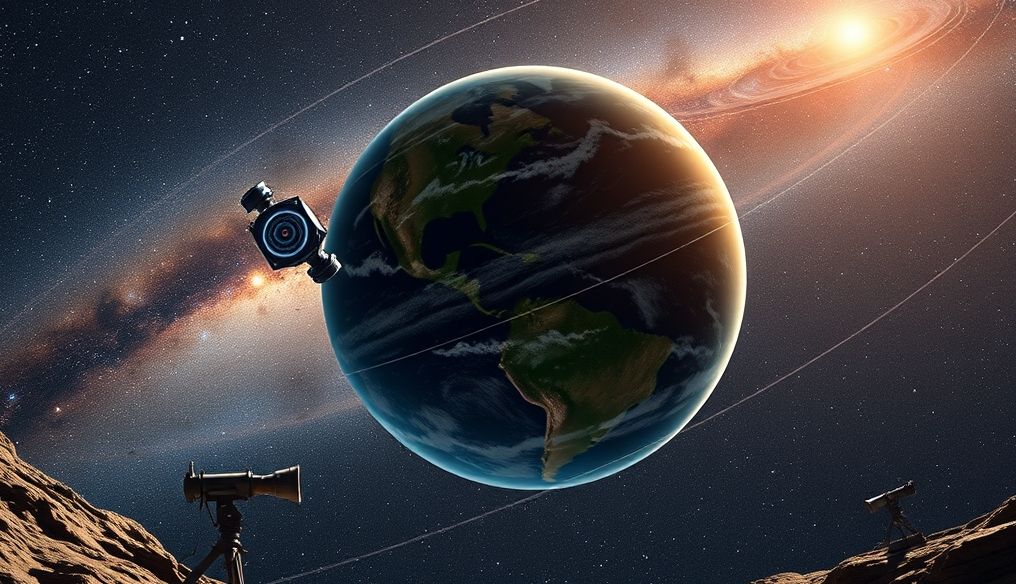Are We Alone? Searching for Life on Other Planets in Our Galaxy
The question of whether life exists beyond Earth is one of the most profound questions humanity has ever asked. With the vastness of the known universe and our increasing understanding of planets beyond our solar system, this question has become more pressing than ever. Are we truly alone in this immense cosmos, or are there other civilizations thriving on distant worlds?
1. Defining Life: The Fundamental Challenge
Before we can search for life, we must first define what we mean by "life." The common definition includes the ability to reproduce, grow, adapt to the environment, and metabolize. But are these characteristics necessary and exclusive to life? There might be forms of life entirely different from what we know, based on different chemistry or existing in extremely harsh conditions.
1.1. Carbon-Based Life
Most life we know on Earth is based on carbon as a fundamental element. Carbon is capable of forming long and complex chains of molecules, making it ideal for building diverse biological structures. However, does this mean that life cannot be based on other elements?
1.2. Possibilities of Silicon-Based Life
Silicon is another element that can form long chains of molecules, and some scientists have suggested that it could be a potential basis for life. However, silicon is less stable than carbon in Earth-like conditions and might require entirely different environments to form stable life.
2. Searching for Habitable Planets
The first step in the search for life is to find planets that can support it. This means looking for planets located in the "habitable zone" around their stars, where the temperature is suitable for liquid water to exist on their surface.
2.1. The Habitable Zone
The habitable zone is the region around a star where liquid water can exist on a planet's surface. The location of this zone depends on the size and temperature of the star. Planets within this zone are not necessarily habitable, as other factors such as the atmosphere and the presence of water play a crucial role.
2.2. Discovered Exoplanets
Thanks to space telescopes like the Kepler Space Telescope and the James Webb Space Telescope, we have discovered thousands of exoplanets, some of which are located in the habitable zone around their stars. However, just because a planet is in this zone does not necessarily mean that life exists on it. We need more information about these planets to determine if they are habitable.
3. Biosignatures
If we find a potentially habitable planet, the next step is to look for biosignatures, which are signs that indicate the presence of living organisms. These signs can include the presence of certain gases in the atmosphere, such as oxygen or methane, or the presence of organic materials on the planet's surface.
3.1. Biogenic Gases
Some gases, like oxygen and methane, can be produced by living organisms. However, these gases can also be produced by non-biological processes, so we must be careful when interpreting their presence. We should look for a combination of biogenic gases, as well as other evidence of life, before drawing definitive conclusions.
3.2. Detection of Organic Molecules
Organic molecules are molecules that contain carbon, which is the basis of life as we know it. These molecules can be detected using spectroscopy, a technique that uses light to analyze the chemical composition of materials. However, organic molecules can also be formed by non-biological processes, so we must be careful when interpreting their presence.
4. Potential Locations for Life in Our Galaxy
In addition to exoplanets, there are other places in our galaxy that may be habitable, such as moons orbiting giant planets, or subsurface oceans found on some moons.
4.1. Moons of Giant Planets
Some moons orbiting giant planets, such as Europa and Enceladus, have subsurface oceans that may be habitable. These oceans are protected from harmful solar radiation and may contain enough energy to support life.
4.2. Subsurface Oceans
Subsurface oceans are oceans that exist beneath a layer of ice. These oceans can exist on moons and dwarf planets and may be habitable if they contain liquid water, energy, and organic materials.
5. Challenges and Difficulties in the Search for Life
The search for life beyond Earth is a very challenging task. We must overcome many technical and scientific challenges, such as the vast distances between stars, the difficulty of detecting biosignatures, and the possibility of life forms entirely different from what we know.
5.1. Vast Distances
The distances between stars are vast, making travel to other planets extremely difficult. Even if we could develop interstellar travel technology, it would take many years to reach the nearest exoplanets.
5.2. Detection of Biosignatures
Detecting biosignatures is a very challenging task, even if we could reach an exoplanet. We must be able to distinguish between biosignatures and signs of non-biological processes, and this requires a deep understanding of biochemistry and geology.
6. Philosophical and Social Implications of Discovering Extraterrestrial Life
If we discover life beyond Earth, this discovery will have profound implications for our understanding of ourselves and our place in the universe. This discovery may change our view of religion, philosophy, and science, and may lead to significant changes in our society.
6.1. Changing Our Understanding of the Universe
The discovery of life beyond Earth will radically change our understanding of the universe. It will show us that life is not unique to planet Earth, and that the universe may be teeming with living organisms.
6.2. Impact on Religion and Philosophy
The discovery of life beyond Earth may affect religion and philosophy. This discovery may challenge some religious and philosophical beliefs, and may lead to a re-evaluation of these beliefs.
7. Future of the Search for Extraterrestrial Life
The future of the search for extraterrestrial life is very promising. With the development of technology and science, we will be able to explore more exoplanets, search for biosignatures, and better understand the universe. One day we may discover that we are not alone in this universe.
7.1. Future Telescopes
Many new telescopes are being developed that will be able to explore exoplanets better than ever before. These telescopes will be able to detect biosignatures and determine if exoplanets are habitable.
7.2. Future Space Missions
Many future space missions are planned that will send robots to other planets and moons to search for signs of life. These missions may discover evidence of extraterrestrial life.
8. Conclusion: Are We Alone?
The question of whether life exists on other planets in our galaxy remains unanswered. However, the scientific and technological progress we are witnessing today gives us hope that we may find the answer soon. Until then, this question will continue to pique our curiosity and motivate us to explore the universe.
Note: This article provides an overview of the topic of the search for life beyond Earth. There are many other details and concepts that have not been covered in this article. For more information, please refer to reliable scientific sources.




